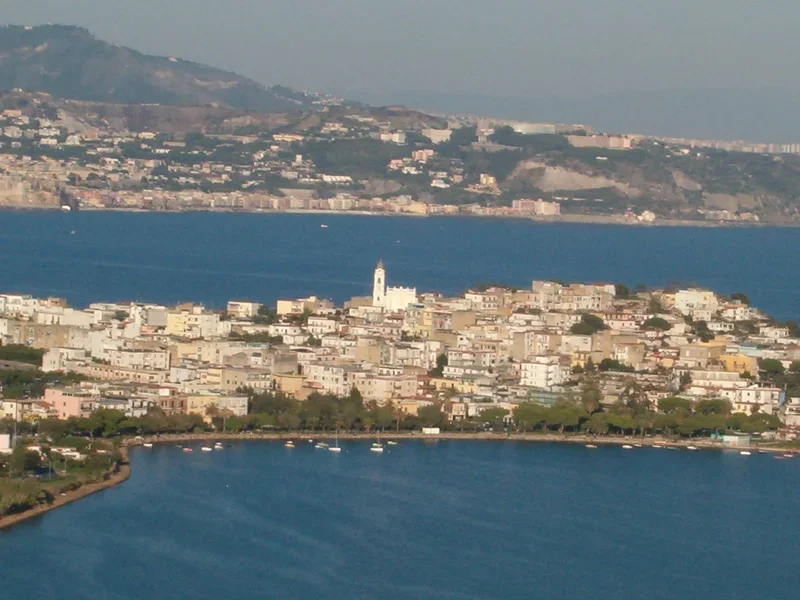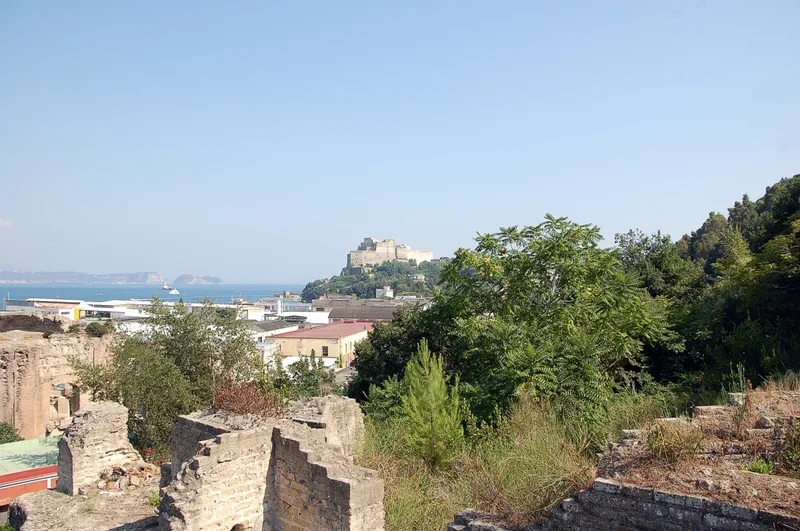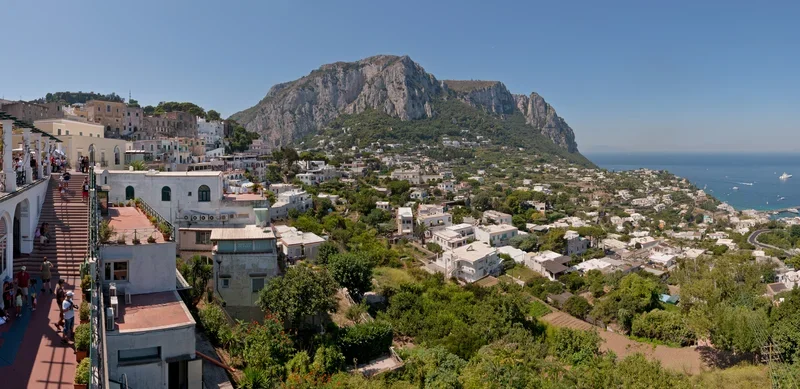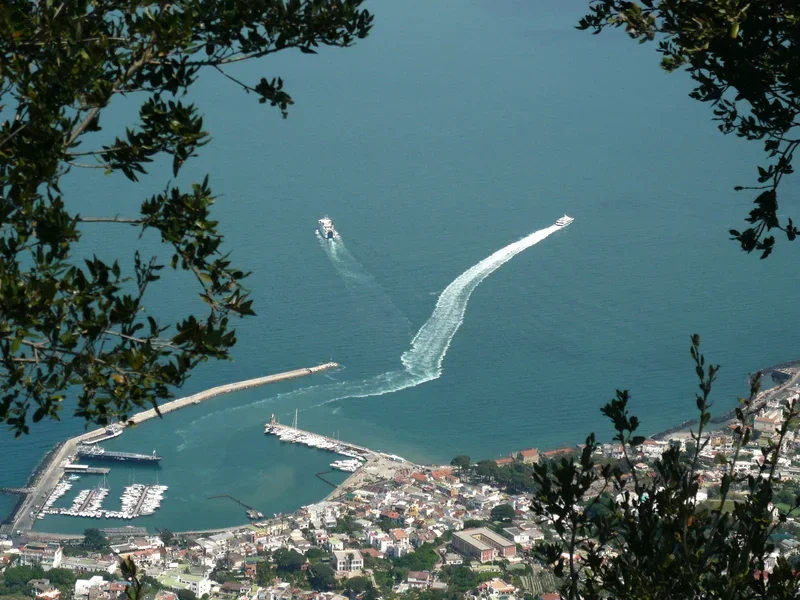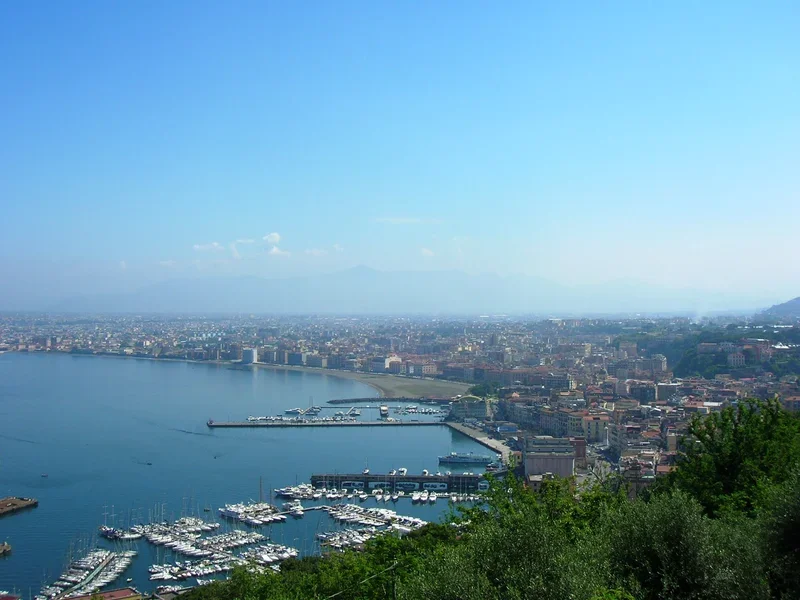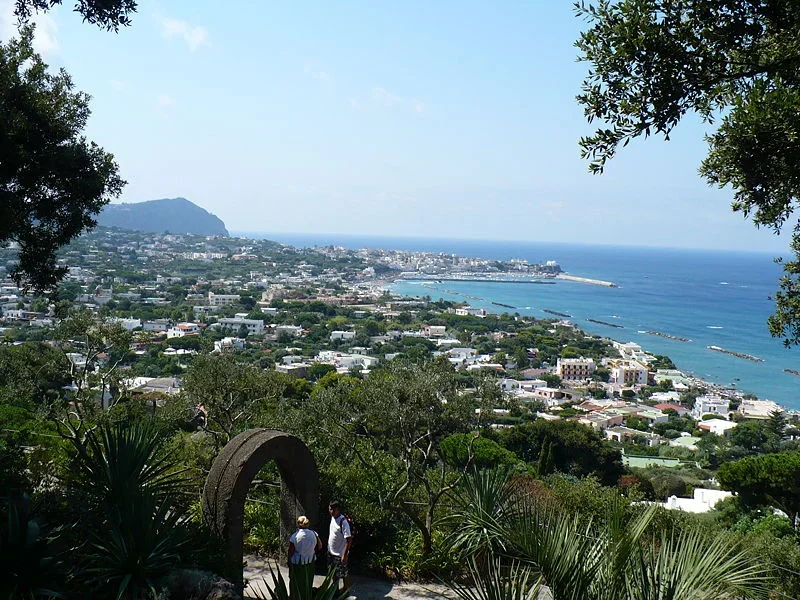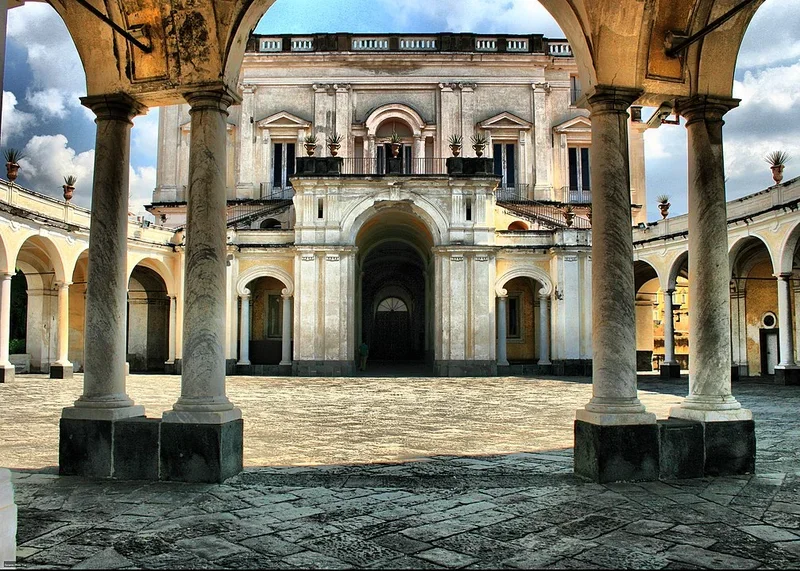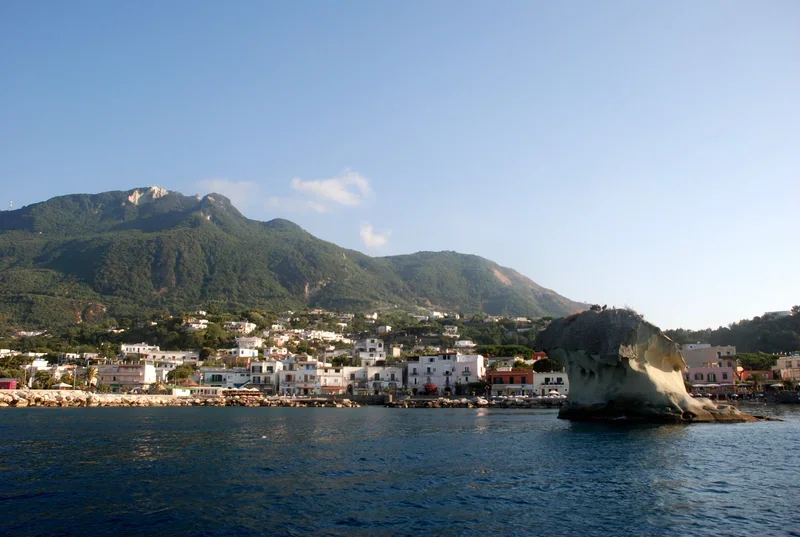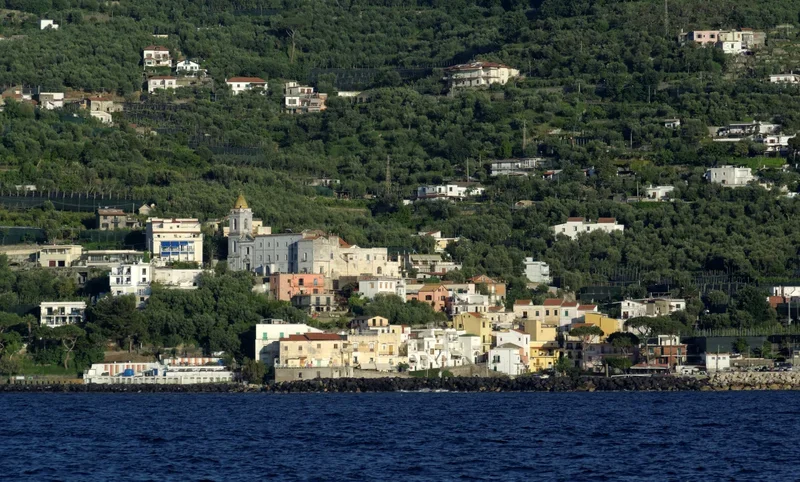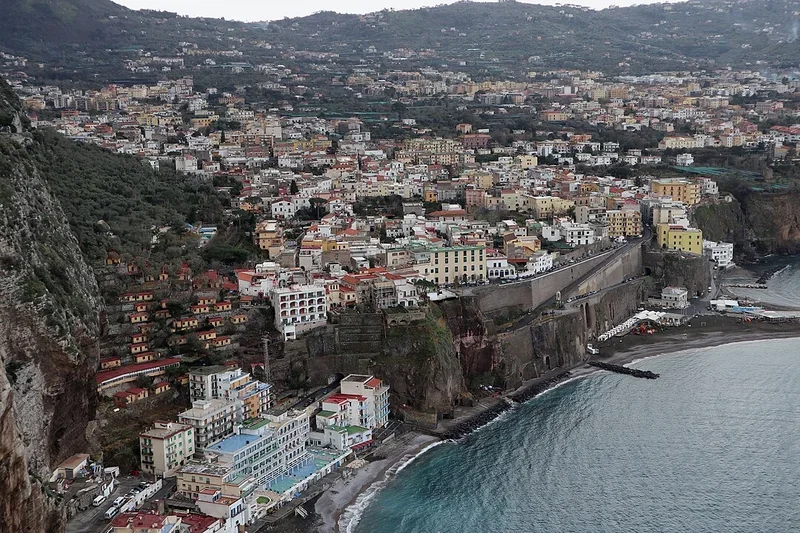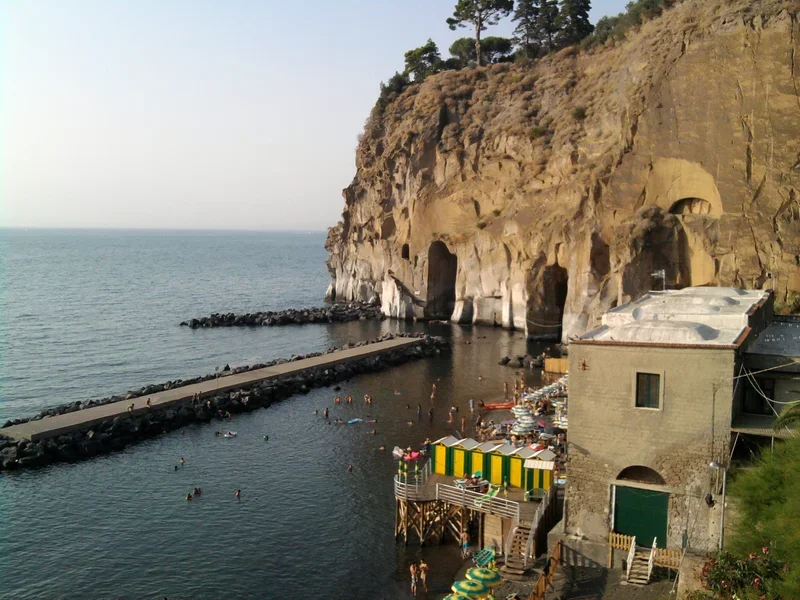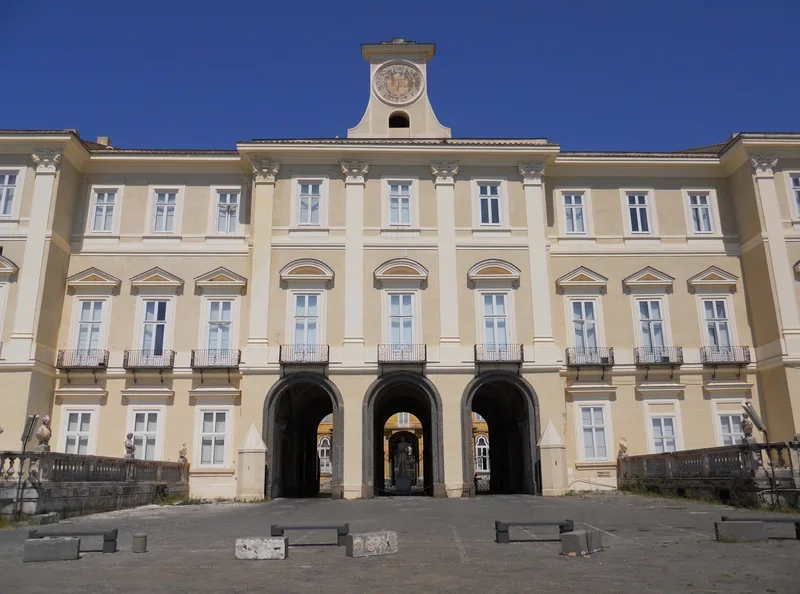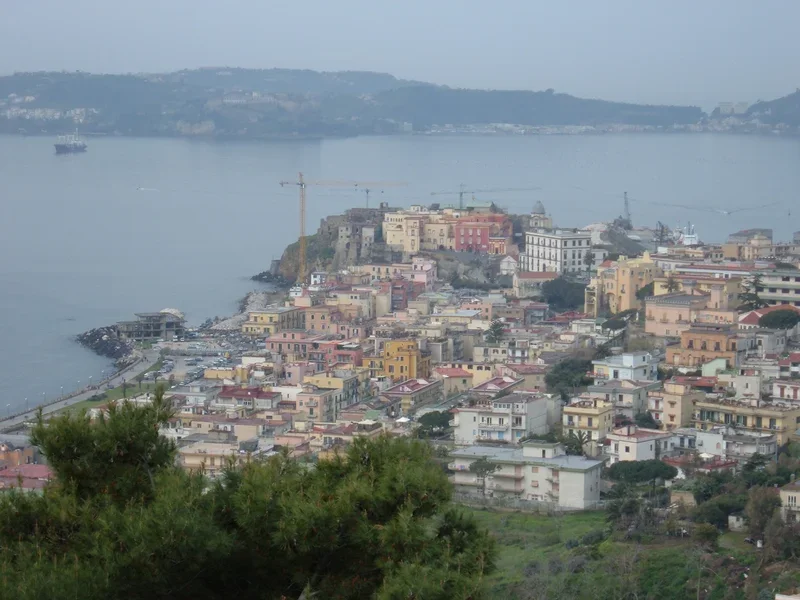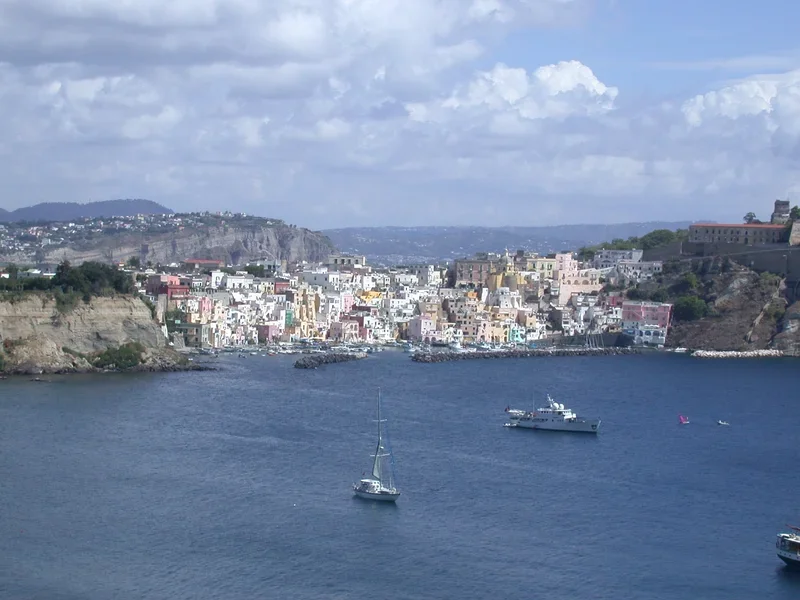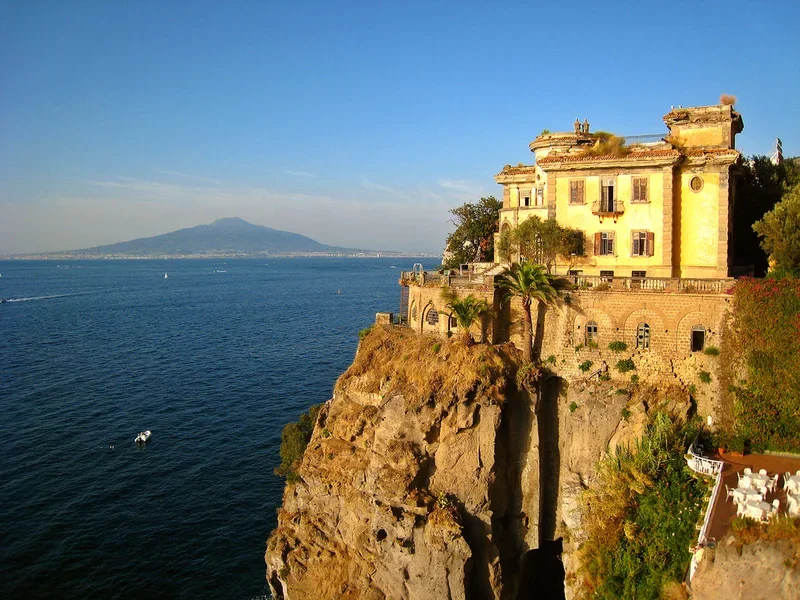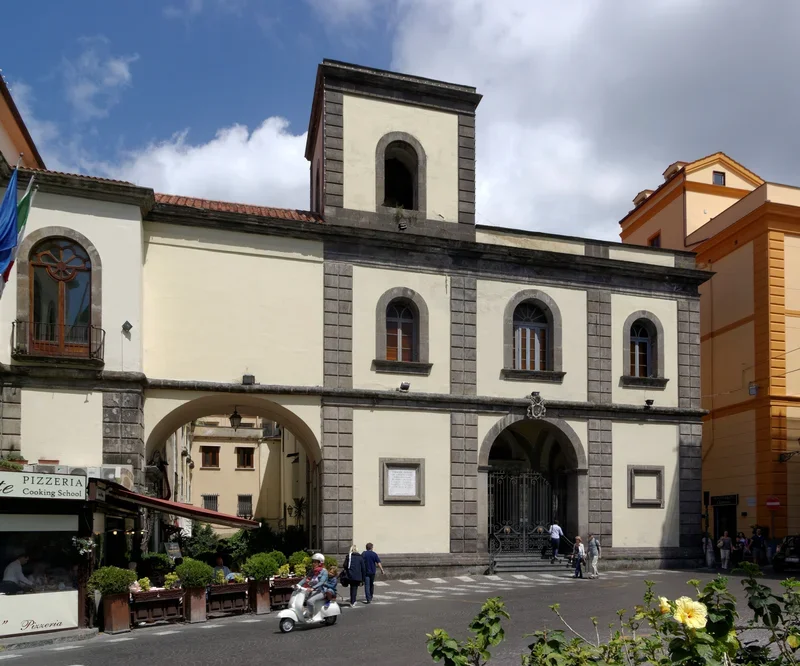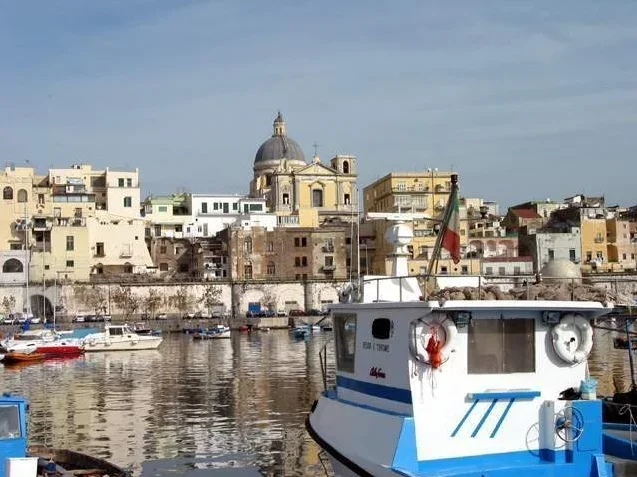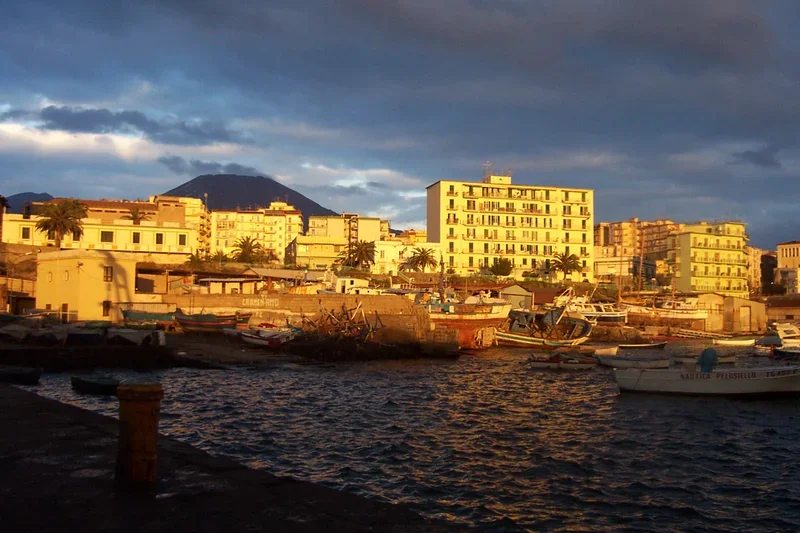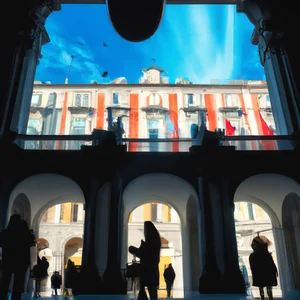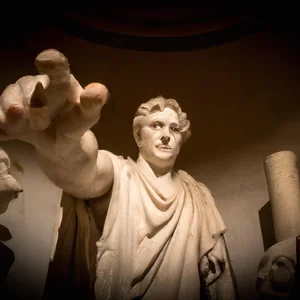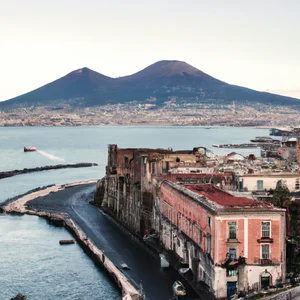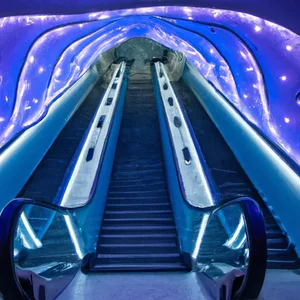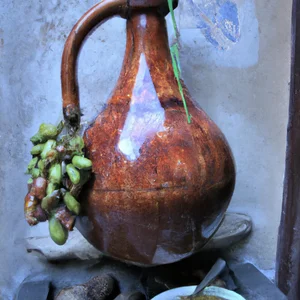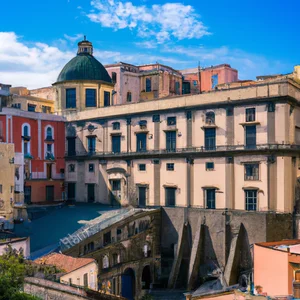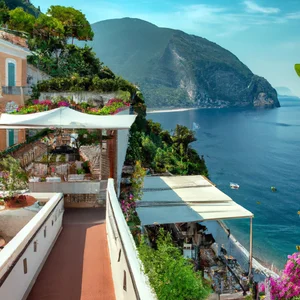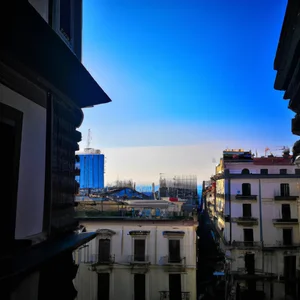Book your experience
Discover Naples: a city rich in history, art and traditions not to be missed!
Naples, one of the most fascinating cities in Italy, is a true treasure chest of history, art and traditions that fascinates every visitor. Located in the gulf of the same name, with its splendid panorama that includes Vesuvius and the islands of Capri and Ischia, Naples is a place where the past and present intertwine in a vibrant continuum. With its historic center declared a UNESCO World Heritage Site, the city offers a myriad of experiences that speak to its rich cultural heritage.
In this article, we’ll dive into ten highlights that you absolutely can’t miss during your visit to Naples. We will start from the Historic Centre, the beating heart of the city, where every alley and square tells centuries-old stories. We will then move to the National Archaeological Museum, which houses some of the most important works of art from antiquity, including finds from the excavations of Pompeii and Herculaneum. We will not fail to visit the San Carlo Theater, one of the oldest and most prestigious opera houses in the world, and the Castel dell’Ovo, symbol of the city overlooking the sea.
We will also discover Underground Naples, a fascinating labyrinth of tunnels and catacombs that reveals the hidden history of the city, and the Capodimonte Museum, which houses one of the most important art collections in Italy. Walking in the Spaccanapoli district, we will immerse ourselves in the daily life of the Neapolitans, while the Galleria Borbonica will take us to explore the history of the ancient underground streets. Finally, we will discover the Catacombs of San Gennaro, a place of great spirituality, and we cannot forget Neapolitan gastronomy, a real journey through flavors and culinary traditions that delight the palate. Get ready to live a unique and unforgettable experience in the city that gave birth to pizza!
The Historic Center of Naples
Description
The Historic Center of Naples is one of the oldest in Europe and was declared a World Heritage Site by UNESCO in 1995. With its narrow streets, historic buildings and baroque churches, the historic center of Naples is a real dive into the past that allows you to discover the thousand-year history of the city.
What to see
The Historic Center is home to numerous tourist attractions, including the Cathedral of San Gennaro, the Cathedral of Naples, the Maschio Angioino, the Royal Palace and the Church of Gesù Nuovo. Furthermore, walking through the streets of the historic center you can admire local craftsmanship, taste Neapolitan culinary specialties and immerse yourself in the daily life of the city.
Curiosities
The Historic Center of Naples is also famous for its popular traditions, such as Neapolitan pizza, pastiera and suspended coffee. During the Christmas period, the streets of the historic center are filled with Christmas lights and decorations, creating a magical and engaging atmosphere.
In short, the Historic Center of Naples is a place rich in history, culture and traditions that you absolutely cannot miss during your visit to the city.
The National Archaeological Museum
Description
The National Archaeological Museum of Naples is one of the most important archaeological museums in the world. It is located in the historic center of Naples, in via Foria, and is housed inside a magnificent 18th century building, the Palazzo degli Studi.
Collections
The museum boasts a vast collection of finds from Campania, Magna Graecia and Pompeii and Herculaneum. Among the most famous works are the statue of the Farnese Bull, the mosaic of the Sacred Battalion and the numismatic collection.
History
The National Archaeological Museum of Naples was founded in 1777 by Charles of Bourbon, king of Naples, who wanted to create a collection of archaeological finds from Vesuvian sites to promote culture and knowledge of antiquity. Over the centuries, the museum has continued to be enriched with new works and finds, becoming an unmissable stop for art and history lovers.
Timetables and tickets
The museum is open from Tuesday to Sunday, from 9:00 to 19:30. The cost of the ticket varies depending on the temporary exhibitions in progress, but is usually around 12 euros for the full price and 6 euros for the reduced one. It is advisable to book in advance, especially during peak tourist periods.
Practical advice
To visit the National Archaeological Museum of Naples it is advisable to dedicate at least an entire day, so that you can admire all the works and finds calmly. It is also advisable to wear comfortable shoes, as there is a lot of walking inside the museum. Finally, we recommend that you purchase the audio guide to learn more about the works on display.
The San Carlo Theater
History and Description
The San Carlo Theater is one of the oldest and most prestigious theaters in Europe, as well as the largest opera house in Italy. Located in the heart of Naples, the theater has a history rich in events and prestigious performances which make it a place of great cultural importance.
Architecture and design
The San Carlo Theater was inaugurated in 1737 and designed by the architect Giovanni Antonio Medrano. Its architecture is a splendid example of Neapolitan Baroque, with an imposing facade and elaborate decorations inside. The theater is famous for its exceptional acoustics and the beauty of its interiors, which include frescoes, statues and crystal chandeliers.
Shows and events
The San Carlo Theater is renowned for its prestigious opera, ballet and concert performances. Every year it hosts a season full of high-level shows, with the participation of world-famous international artists. Furthermore, the theater organizes special events and festivals that celebrate Neapolitan culture and art.
Guided visits and tours
For those who wish to explore the San Carlo Theater and learn about its history and secrets, guided tours are available that allow you to discover behind the scenes of the theater and admire its hidden treasures. Furthermore, the theater offers the possibility of participating in special tours that include access to areas not normally open to the public.
In conclusion, the San Carlo Theater is a magical and fascinating place that represents the beating heart of culture and art in Naples. Its thousand-year history, its extraordinary architecture and its program full of high-level shows make it an essential stop for those visiting the Neapolitan city.
The Castel dell'Ovo
History
The Castel dell'Ovo is one of the oldest and most evocative symbols of Naples. Located on the small island of Megaride, this castle stands majestically above the sea, offering breathtaking panoramic views of the Bay of Naples. Its history dates back to the Roman period, when Emperor Augustus founded the city of Neapolis and built the castle as part of the city's defense system. Over the centuries, the Castel dell'Ovo has undergone many transformations and expansions, becoming a royal residence and a symbol of power and prestige.
Legends
One of the most famous legends linked to the Castel dell'Ovo concerns the poet Virgil, who according to tradition hid a magical egg under the foundations of the castle, thus guaranteeing its stability and invulnerability. According to legend, if the egg were to break, the castle would collapse and with it the entire kingdom of Naples. This legend has contributed to creating an aura of mystery and charm around the Castel dell'Ovo, making it an unmissable destination for visitors curious to discover its history and legends.
Visit
The Castel dell'Ovo is open to the public and offers the opportunity to visit its imposing walls, defense towers and suggestive internal gardens. Inside the castle it is also possible to admire exhibitions and cultural events, which allow visitors to completely immerse themselves in the history and unique atmosphere of this place. Furthermore, the panoramic view of the bay of Naples is an unmissable sight, especially at sunset, when the sun dives into the sea and paints the sky with warm and enveloping colours.
Underground Naples
Description
Underground Naples is a complex of tunnels, cisterns, tunnels and underground cavities that extend for approximately 80 kilometers beneath the historic center of Naples. This incredible underground labyrinth dates back to Greek and Roman times and has had various functions over the centuries, including that of refuge during wars and storage for water reserves.
What to see
Visiting Underground Naples it is possible to admire the ancient Roman cisterns, the remains of a Roman theater and Roman baths, as well as the anti-aircraft shelters used during the Second World War. Furthermore, there are also tunnels that lead to different points of the city, offering a unique perspective on the history and archeology of Naples.
Guided tours
To explore Underground Naples it is advisable to take part in a guided tour, so you can obtain detailed information on the history and importance of this underground complex. During your visit, you can discover the secrets hidden beneath the streets of Naples and immerse yourself in a fascinating and mysterious underground world.
Curiosities
Underground Naples has been used as a set for several films and TV series, including "Gomorrah" and "Ben-Hur". Furthermore, it was the scene of cultural events and theatrical performances, which contributed to enhancing this unique place in the world.
The Capodimonte Museum
Description
The Capodimonte Museum is one of the most important museums in Naples and Italy and is located inside a magnificent royal residence, the Palazzo di Capodimonte. The museum houses a vast collection of works of art ranging from the Middle Ages to the Renaissance, Baroque and up to the contemporary age. Among the most famous works kept inside there are paintings by artists such as Caravaggio, Titian, Raphael, El Greco and many others.
History
The Capodimonte Museum was founded in 1757 by Charles of Bourbon, king of Naples, who decided to transform the Capodimonte Palace into an art gallery to house the works of his personal collection. Over the centuries, the museum has been enriched thanks to donations, purchases and bequests, becoming one of the most important Italian art galleries.
Collections
The collections of the Capodimonte Museum are divided into different sections, including the Pinacoteca, which houses paintings of great artistic value, the Galleria dei Primi Piani, which exhibits works by contemporary artists, and the collection of porcelain and objects of decorative art. Furthermore, the museum also hosts a section dedicated to contemporary art and temporary exhibitions.
The Capodimonte Museum is an unmissable place for art and culture lovers, who can admire extraordinary works in a historical and architectural context of great beauty. A visit to the museum offers a unique and unforgettable experience, which allows you to immerse yourself in the history of art and discover masterpieces of inestimable value.
The Spaccanapoli District
Description:
The Spaccanapoli neighborhood is one of the most characteristic and fascinating places in the historic center of Naples. Located in the heart of the city, this neighborhood owes its name to the main street, Spaccanapoli, which divides the historic center into two parts. Along this narrow and winding road it is possible to admire numerous historic buildings, churches, traditional shops and artisan workshops, which transport visitors on a journey into the past.
What to see:
Visiting the Spaccanapoli district it is possible to admire some of the main monuments of the city, such as the Church of Santa Chiara, with its magnificent cloister and the Opera Museum, the Church of San Domenico Maggiore, the Monumental Complex of San Lorenzo Maggiore and the Sansevero Chapel, with the famous statue of the "Veiled Christ". Furthermore, along the narrow streets of the neighborhood it is possible to discover small artisan shops, where it is possible to purchase typical local products and art objects.
Atmosphere:
The Spaccanapoli neighborhood is a magical place, where time seems to have stopped. The narrow streets and picturesque squares create a unique and evocative atmosphere, which enchants visitors from all over the world. Among the alleys of the neighborhood it is possible to breathe the authentic Neapolitan atmosphere, among the colours, scents and sounds of daily life.
How to get there:
The Spaccanapoli neighborhood is easily reachable on foot from the historic center of Naples, through the main streets of the city. Furthermore, it is also possible to reach the neighborhood by public transport, such as buses and the subway. Once you reach your destination, it is advisable to explore the neighborhood on foot, to fully appreciate its beauty and charm.
The Galleria Borbonica
Description
The Galleria Borbonica is an ancient underground gallery located in the heart of the historic center of Naples. Built in 1853 at the behest of King Ferdinand II of Bourbon, the tunnel extends for over 300 meters below the city level and was used as an air raid shelter during the Second World War.History
The Galleria Borbonica was initially conceived as a connecting tunnel between the Royal Palace and the San Ferdinando district, but was later expanded to include secret rooms, water cisterns and even an underground chapel. During the war, the tunnel was used as a refuge for the Neapolitan population, who found shelter there during the Allied bombings.Guided tours
Today the Bourbon Gallery is open to the public and offers guided tours that allow visitors to explore its long corridors, secret rooms and evidence of its history. During the visit, it is possible to admire ancient artefacts, graffiti left by refugees during the war and discover the secrets hidden under the streets of Naples.Curiosities
An interesting detail of the Galleria Borbonica is the "Underground Theatre", an ancient abandoned theater that was used for shows and theatrical performances during the 19th century. Today the theater has been brought to light and is used for cultural events and theatrical performances.The Galleria Borbonica is undoubtedly one of the most fascinating attractions in Naples, which allows visitors to immerse themselves in the underground history of the city and discover its best kept secrets.
The Catacombs of San Gennaro
The Catacombs of San Gennaro
History
The Catacombs of San Gennaro are one of the most evocative and mysterious places in Naples. Dating back to the 2nd century AD, these ancient underground tunnels were initially used as a burial place for early Christians. It is thought that San Gennaro, the patron saint of Naples, found refuge and protection within these catacombs during the persecutions against Christians.
Description
The Catacombs of San Gennaro extend for approximately 5,000 square meters under the Capodimonte hill, in the northern area of Naples. Inside them it is possible to admire numerous tombs, frescoes and mosaics that testify to the life and faith of the first Christians. The catacombs are divided into three levels, each of which presents a different type of tombs and decorations.
Visit
To visit the Catacombs of San Gennaro it is necessary to book a guided tour, as access is limited and controlled. During the visit, tourists will have the opportunity to explore the underground tunnels, admire the ancient tombs and discover the history and legends linked to San Gennaro and the first Christians of Naples. It is advisable to wear comfortable clothes and suitable shoes, as the ground inside the catacombs can be slippery and uneven.
In conclusion, the Catacombs of San Gennaro are a fascinating place rich in history that certainly deserves a visit during your stay in Naples. Immersed in the evocative atmosphere of the underground tunnels, visitors will be able to discover a hidden and fascinating side of the Neapolitan city, between art, faith and tradition.


